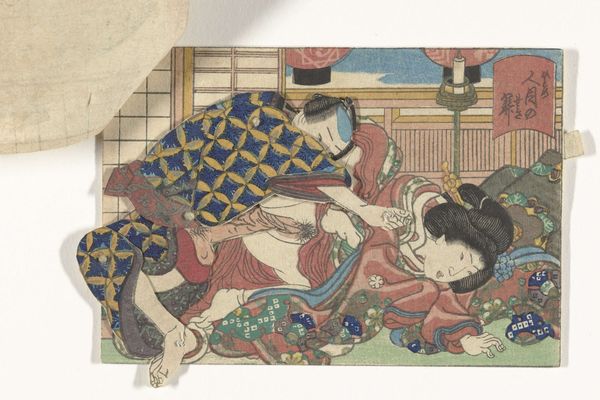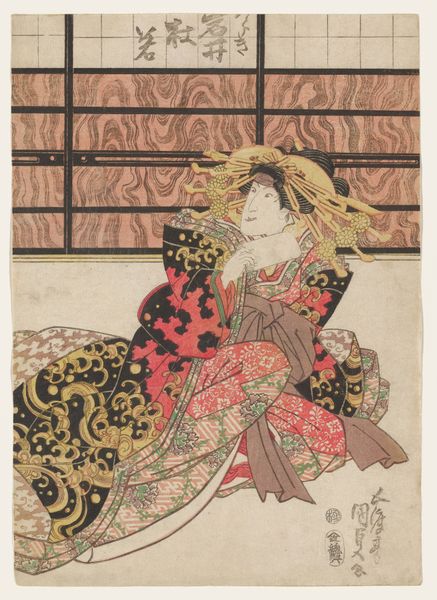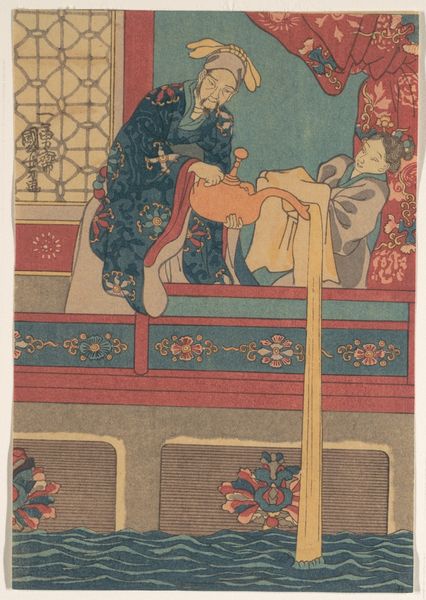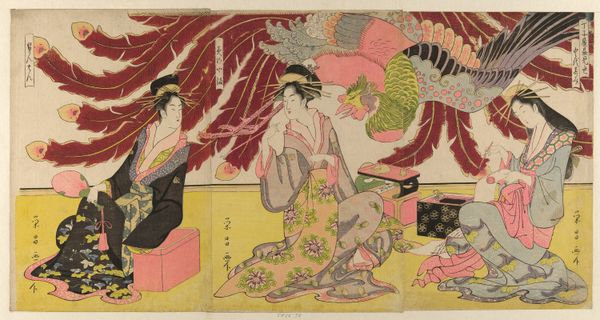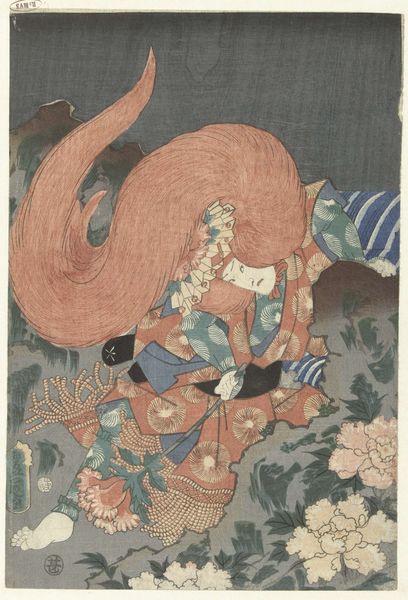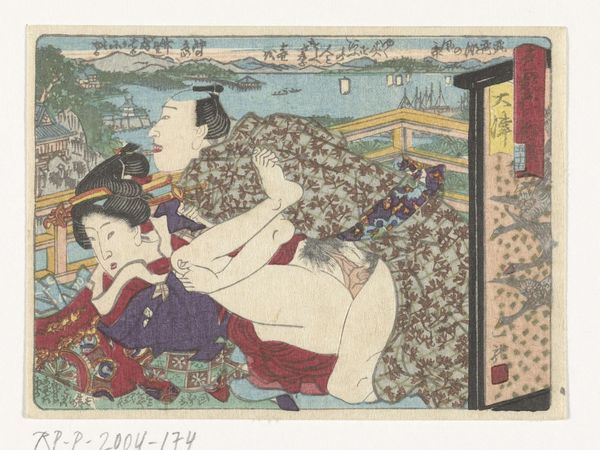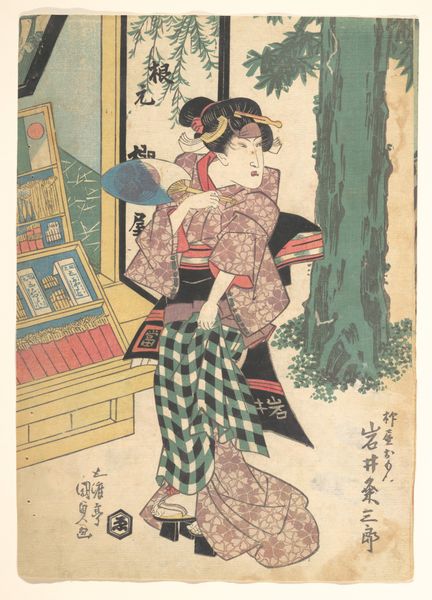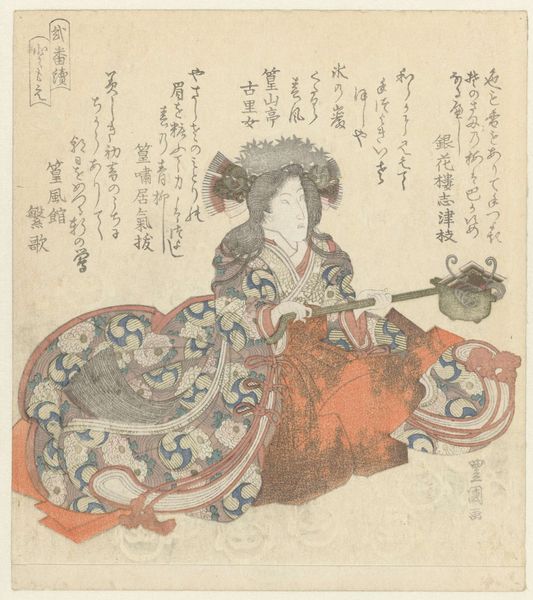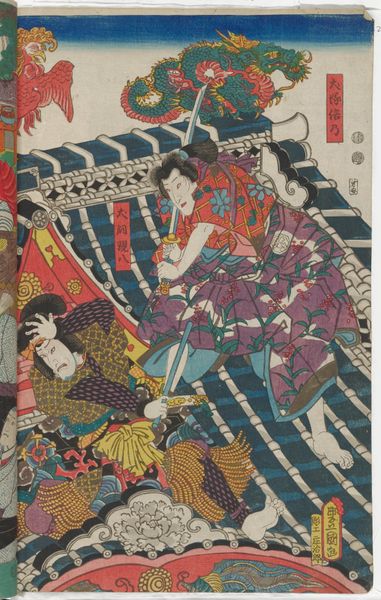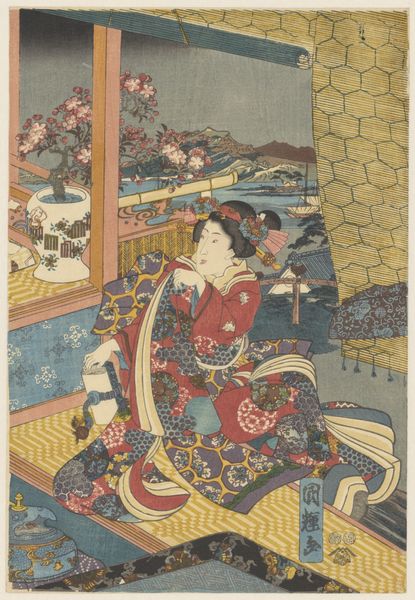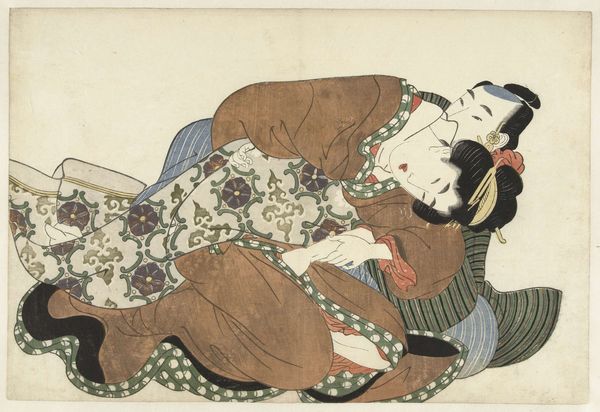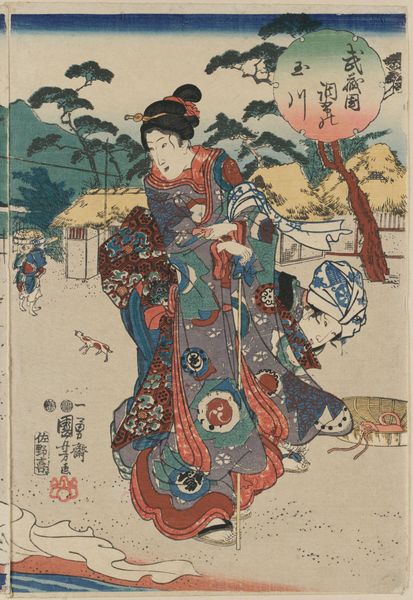
print, textile, ink, woodblock-print
#
portrait
# print
#
asian-art
#
textile
#
ukiyo-e
#
folk art
#
figuration
#
ink
#
woodblock-print
#
watercolour illustration
#
genre-painting
#
watercolor
#
erotic-art
#
calligraphy
Dimensions: height 89 mm, width 121 mm
Copyright: Rijks Museum: Open Domain
Editor: So, this is "De pleisterplaats Kyoto," a woodblock print by Utagawa Kunisada, created sometime between 1835 and 1845. It feels quite intimate, with a very intricate use of patterns and textiles. How do you interpret this work in the context of its time? Curator: Looking at Kunisada's print, I see a challenge to the traditional power dynamics embedded within Edo-period Japanese society. Consider the erotic art or shunga tradition within which it operates. While seemingly depicting pleasure, it's vital to ask whose pleasure is centered, and what power dynamics are at play. The gazes, gestures, the very composition invites us to question conventional morality and gender roles within the rigidly structured social hierarchy of that era. What aspects strike you as most evocative in this regard? Editor: The directness of the figures' interactions and the elaborate setting makes it stand out to me. The work defies simple interpretations and invites questioning the relationship between pleasure, power, and representation in a way that still feels pertinent today. What might contemporary audiences find challenging about the artwork? Curator: Perhaps, its seemingly uncomplicated celebration of intimacy. We need to consider how class, economics, and cultural background frame access to, and experiences of, intimacy. Understanding those socio-economic relationships and the cultural biases is crucial to viewing this work responsibly. It prompts us to ask ourselves, how can historical art encourage conversations around contemporary inequalities? Editor: That's really insightful. I'm left thinking about how historical depictions of intimacy can serve as a starting point to explore much broader social issues, especially concerning gender, sexuality, and class. Curator: Exactly! By confronting the complexities and ambiguities in Kunisada’s print, we recognize that art can indeed act as a mirror and a challenge to societal norms, both past and present.
Comments
No comments
Be the first to comment and join the conversation on the ultimate creative platform.

